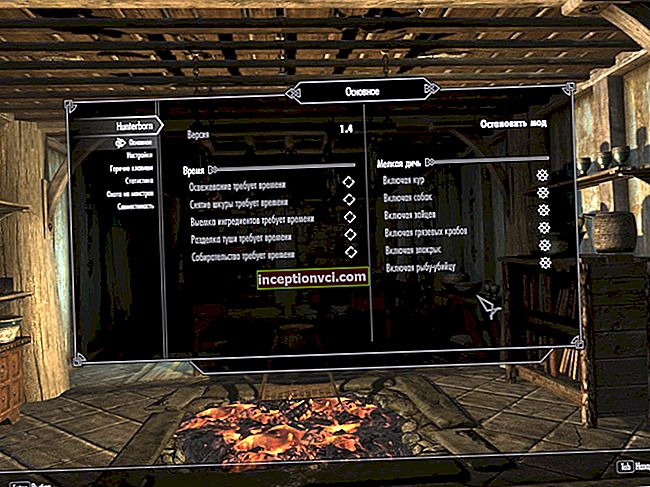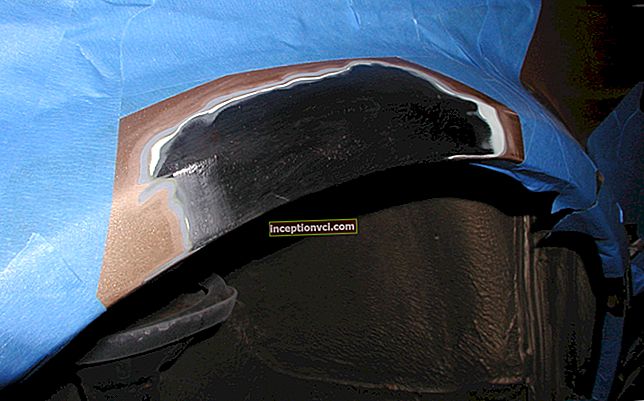Frankly, some three years ago, I considered catching a chub on a spinning rod in winter either an outstanding event, or an accidental crimping of a forehead fish waiting for harsh times. Immediately I will make a reservation, we are not talking about countries with mild winters, such as Bulgaria or Spain, but about our Motherland, where the coveted trophy of many spinning players with the first frosts abruptly stops active nutrition, and in winter falls into a state close to suspended animation and consumes food from time to time, in a word, it behaves like an ordinary carp fish in our latitudes.
In principle, I have not changed my opinion, if we talk about relatively large rivers such as the Tissa, Desna, especially about the Dnieper. But as for the rivers of more modest sizes, there are options. And not just options, but even some working schemes, which sometimes give a relatively positive result in catching chub in late autumn, winter and early spring.

Of course, not everything is so simple, otherwise the spinning and fly fishing fraternity would catch the fish they revered in the highest degree throughout the season. Just come to any small river and catch a chub will not work. First of all, you need to competently approach her choice, and here both observation with experience and elementary luck play a role. Well, sometimes it is simply difficult to force yourself to devote precious time to such exotic fishing, when the first snow flies outside the window, and the pike and pike perch continue to actively peck. On the other hand, fans of light and ultra-light spinning will always find it useful to use another chance to end the season with white fish on a pleasant note.
But back to the issue of location. How to choose the right river? First, be patient and understanding about unsuccessful attempts. Secondly, do not forget that we live in the 21st century, and in every region of the country there is a large fishing forum, where news from the reservoirs is vividly discussed. Even if you will not find direct fires there, but with a certain observation and ingenuity, it is quite possible to find promising locations. And, thirdly, remember about the "summer" places of large concentrations of chub, and how this can be useful will be discussed below.

For example, if you live in the Kiezskaya region, then it is unlikely that you will catch a chub in winter in Teterev and its northern tributaries. Fast-flowing shallow Polesie rivers without pronounced and frequent rapids somehow do not have a forehead for short periods of active feeding in cold weather. There are many reasons, but the main ones are: a fairly low average water temperature, low regulation, leading to the fact that on such a river ice rises early, melts late, and the biorhythms of fish living in it obey the laws of nature more severely than in other rivers, In a sense, this is good, the pristine natural cycle of all living things is preserved. But with the blatant level of poaching and grabbing, which is flourishing in our country, this positive somehow fades. But let's not talk about sad things.
Small rivers flowing through peat bogs and relatively deep rivers such as Irpeni, Bucha and Zdvizh are much more promising. With the only amendment that historically there are not very many chub in Zdvizh, therefore, in my humble opinion, you should not look for it in winter where it is not always possible to catch it in summer. Butcha is good because it does not freeze for a long time, as it is generously fed by industrial and domestic wastewater, but it is quite difficult to fish in it - its small size and tightness suggest the presence of exceptional skill and patience. But the chub is often more active here, although its size is not impressive. However, in winter this is more of a rule, because large fish are still much easier to catch in a warm spring.I sincerely admit that during the cold period I did not catch a chub weighing more than half a kilogram. But the impressions from the working "winter" fish are no less than from the more accommodating "summer".
Let's return to the peat rivers. I gave specific examples only in order to show in practice the differences in chub bite in seemingly similar rivers. In the same Irpen, my friends and I managed to catch a forehead in the winter. Infrequently, but quite regularly, and all the captures fell under the general laws: the fish stood in deep places, under cover, away from the main stream, but in close proximity to it. Apparently, the more active behavior of the chub in comparison with the same Polesie rivers of the Teterev type was explained by a slightly higher average water temperature. Irpen is a highly regulated river, the water is often lowered at the sluices, and the average depth is much higher than that of the shallow and fast Polesie rivulet, so the fish are less susceptible to sudden changes in temperature. Irpen is far from the most promising, but not the worst option for catching chub in winter. Its type is quite typical, and I think that similar rivers can be found in many regions of Ukraine.

Note that in practice, the best bite of a chub on a peat river was at the end of the "season": late March - early April. But the largest one (510 grams) came across to me in December, at a temperature of -1, when there was a light snowball. Interestingly, in the same place there were several similar bites, but the fish was not detected. Before the day of fishing, frosts lasted for three days on average about -7, and, apparently, -1 degree was perceived by the fauna as a thaw, and a sleepy chub still hatched in the warmest place ...
The southern Ukrainian rivers are of much greater interest. We will not speak in detail now about the Dniester and the Southern Bug, which clearly do not fall under the rule of the cold large rivers mentioned at the beginning, since this is a topic for a separate article. Let's just note that the Southern Bug will be, perhaps, an ideal "template" for finding a smaller river with an active chub. Strong regulation, coupled with extended rapids, create completely different conditions for the habitation and feeding of fish in winter. Therefore, in such rivers, it behaves much more actively than traditionally, and the chub is no exception. Often he is caught in the Bug in February, and even with wobblers. The rest of the fish do not sleep here either - there are perch and perch. But the winter day is short, and the Bug is far enough for most of its fellow citizens. Therefore, instead of being jealous of the residents of Vinnytsia and Kirovograd, isn't it better to look for a river similar in terms of conditions nearby? I will say even more - you can find it in almost every area. For example, for the first time a winter chub was "shown" to me by Anton Gorai from Zhitomir.
A small rapids river flowing in a granite canyon - isn't it a miracle for a flat area? In Austria it would have been cleaned long ago, the banks would have been landscaped, trout and grayling would have been launched. In Ukraine, however, it is generously "heated" by sewage and the persistent chubs and pikes, which are still found in abundance here, cannot survive in any way. Well, not a trout, but a chub in winter - that was also interesting, and I did not hesitate to respond to Anton's invitation to go fishing together. I confess, I didn't catch a chub personally, but my partner managed to earn a few bites and catch a hundred-gram chub on the prosaic Tiny from Salmo. Of course, the size of the trophy is very "harsh", but on the snowy shores, in December, in short, I was impressed. Interestingly, the jig did not bring any result either then or later, only pikes pecked at it.
Once, in the November thaw, I remembered the perch, which were found in great numbers on the Rosi rolls, and decided to incite Viktor Moroz on an unplanned trip. An avid ultra-pilot, he immediately agreed, leaving, however, some reserve of irony about the success of such an event.Almost winter Ros greeted us with coziness and melancholy of the sleeping nature, diluted with the cheerful noise of the rolling. Wasting no time, I tied a microtwister on a gram head to a line from a fishing line and began to fish for promising pits away from the fast streams. But for some reason the perch reacted poorly, two transparent "sailors" were obviously substandard trophies for these places, and I remembered the hordes of chub, who were fattening here in summer. Where did the forehead hide? It turned out that it moved downstream, but very close, about 50 meters, and showed itself from the very first postings. And sometimes quite good specimens came across. The fish clearly preferred deep pits behind lonely boulders at the bottom, where the current faded, but the water was saturated with oxygen. The wiring required the most straightforward - an ordinary step with a pause of one and a half second.
Having met Vitya, I found out that he also caught several chubs with a microjig, and then convinced a couple to attack the micro-vibrator, and bites happened even on the jet. Thus, our skepticism was finally dispelled, and we fished perfectly that day, there were several bites even on a wobbler, but we could not find a single fish.
Subsequently, I repeatedly checked this place in November and March, and always the golavlik responded, at least to the microjig. Obviously, the locations where this fish is kept in large quantities in warm weather become its home in winter as well. You just need not be lazy to analyze the river in terms of sites promising for the chub, adjusted for its winter model of behavior.
It is clear that you should not go to extremes and go for a chub in the wilderness. Rather, it is entertainment for off-season periods, when fishing for pike perch and pike has become boring, and the ice has not yet risen. I would say that the ideal time for "winter" chub fishing is November and April. If December turned out to be warm and without severe frosts, this is also a quite favorable period, just like March, provided that the past mild winter has passed.
A lot has already been said about the place, I will only add that it is best to choose it so as to have some kind of option in stock. Suddenly, for some global reason, the chub will not work out, so precious time will not be wasted. Usually I switch to catching perch or pike perch, which is easy to find in the same river, but catching is always equally interesting. However, I guarantee that if at least once you manage to capture a pleasant contrast in your visual memory - yellowish scales and red fins on white snow, then you will always find time to catch chub for ultralight in winter.

Let's move on to the most prosaic question - the gear. If in the summer on a stormy threshold, when fishing for a large chub, I prefer light with a power reserve, then in winter, when the fish is caught relatively small and resists more sluggishly, and there is practically no fishing in a strong current, an ultralight rod will be much more appropriate. Recommendations on models are pointless, and our usually stingy market operators do not want to advertise for free. True, I catch a chub in winter with a rod with a blank from AJ & rods, which you won't find in Ukraine in the daytime with fire, so I will allow myself to mention it. This rod is 5.6 feet long and has a lure test of up to 5 grams and has a medium-fast action. Its distinctive feature is a sufficiently high stiffness of the blank, due to which it has an outstanding sensitivity, which helps a lot in microjig. The rod is also very convenient when using jerky lines. And the power reserve allows you to relatively calmly play fish weighing up to one and a half kilograms. Any reel is suitable, 1000-2000 in size, as long as it correctly balances with the rod, fits the line evenly and “copes” with cold weather. In my case, this is Shimano Twin Power 1000 PG5, now discontinued, but conscientiously served for three seasons, I hope it will not fail in the future.I wind a thin Japanese-made braided cord with a breaking load of 6 lb onto the spool. Be sure to tie a leash made of thin monofilament fishing line or fluorocarbon - in winter the water in the rivers is usually clear, and the fish is extremely careful about brightly colored cords. You can knit the bait directly to the line, but I prefer to use the small so-called American-style fastener.
As for the baits, everything is more or less simple and understandable. A light jig (weighing 1-3 grams), bites happen both on a vibrotail and on a twister up to 2 inches in size. Personally, Relax Kopyto shakes work best for me, but Mann's Predator (Assasin) and other popular models will do just fine. The tiny one-inch and one-two-inch twisters are very good, I especially like those that were previously produced by Mikado. The Japanese-made silicone lures, known to us as Fina Roc-kfish, 1.5 "in size and in a transparent with glitter colors, proved to be excellent. In general, everything is simple with colors - transparent light, with sparkles or machine oil (with and without sparkles), ultraviolet light, light green with sparkles - for darker water. I think reddish and pinkish shades are also good, I just didn't get my hands on it.
I prefer mounting on a jig head, but this is more of a personal whim, although one can argue, for example, that the fish is detected better than when using articulated mounting.
In general, in such fishing, it simply begs to use the edible "rubber" so popular now in our country. However, due to lack of free time, I did not have time to test it in the case of the chub, but success in catching perch, pike perch and pike suggests that everything will also be OK with the chub. However, theorizing is not always a rewarding task, so we'll end up with sjig baits here.

As already mentioned, sometimes shookers and wobblers "shoot", but in lowland rivers this is not often the rule, rather the exception. A somewhat different situation in Transcarpathia - there the chub is permanently active until freezing, which allows you to use the usual baits when fishing on fine days. I remember how Bogdan Tsebrik caught a nice chub in mid-November at River2Sea Baby Crank. The fish coveted a very slow posting and behaved like a winter calm. In general, heavy fly-fishing nymphs work perfectly in mountain rivers all year round, but, firstly, not everything is so unambiguous with them on plain rivers, and secondly, this is a separate topic, which we will not touch upon now. I will only add that the main type of bait is in my micro jig box, there are also two or three proven cranks and minnows, heels of hoovers and a couple of nymphs.
What can I say in conclusion? Of course, the thoughts outlined above are just a compilation of a fairly modest experience in such a difficult fishing task as catching a chub in winter. I hope that in the future the experience of such fishing will acquire new observations and facts, which will be interesting to share with the readers of your favorite magazine. In the meantime, I wish everyone a Happy New Year and Merry Christmas and wish you new creative, fishing and life achievements!










